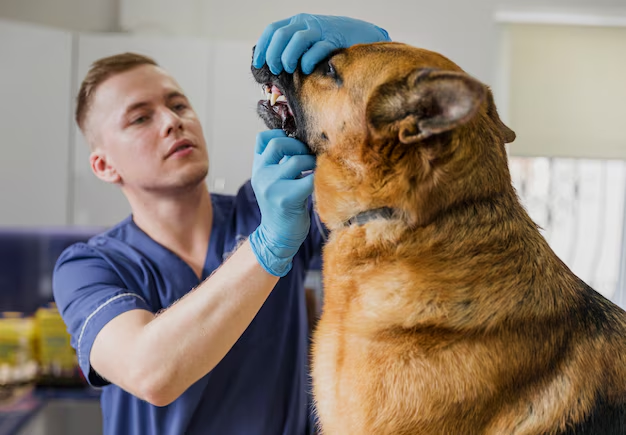Understanding Cataract Surgery for Dogs: What Pet Owners Need to Know
Cataracts are a common eye issue not only for humans but for our furry friends too, especially dogs. For concerned pet owners noticing a haze in their pup's eyes, understanding cataract surgery options might be crucial. With the clarity of vision at stake, exploring this medical intervention becomes a priority. But what does cataract surgery for dogs entail, and how can you decide what's best for your pet? Let's unpack the full spectrum of information surrounding this topic, empowering you to make informed decisions for your canine companion's eye health.
🌟 What are Cataracts and How Do They Affect Dogs?
Cataracts develop when the lens of the eye clouds, leading to diminished vision. In dogs, this condition often appears as a cloudy or bluish hue in the eye. While cataracts can form due to aging, they may also result from diabetes, injury, or sometimes even be congenital. The unsettling fact is that cataracts can potentially lead to blindness if untreated, making it vital for dog owners to monitor their pet's eye health vigilantly.
Signs Your Dog Might Have Cataracts
- Cloudy or opaque appearance in one or both eyes
- Reluctance to jump or climb stairs
- Bumping into objects or walls
- Increased anxiety, especially in new environments
While these symptoms can indicate cataracts, they might also suggest other eye conditions, necessitating a visit to the veterinarian for an accurate diagnosis.
🏥 When to Consider Cataract Surgery
Cataract surgery for dogs isn't automatically the first step; it's typically reserved for cases where vision significantly undermines quality of life. Here's when surgery might be a suitable option:
Evaluating the Need for Surgery
- Quality of Life: If your dog's impaired vision hinders daily activities, surgery might be worthwhile.
- Consultation with a Specialist: An eye veterinarian can assess the cataracts' severity and potential benefits of surgery.
- General Health: Your pet should be in good health to undergo anesthesia safely.
Advantages of Cataract Surgery
- Restored Vision: Successful cataract surgery can restore sight almost fully.
- Improved Life Quality: A good vision enriches a dog's interaction with its environment, promoting a fuller life.
- Reduced Risk of Further Complications: Unchecked cataracts can lead to painful secondary eye conditions like glaucoma.
🚀 The Cataract Surgery Process
Understanding the surgical journey can demystify concerns and help pet owners prepare. Let's walk through the typical cataract surgery process for dogs, from initial assessment to recovery.
Pre-Surgery Assessment
Before surgery, a thorough examination ensures the dog is a good candidate. This includes:
- Comprehensive eye exams
- Blood tests to assess overall health
- Ultrasonography to check for retinal detachment or other ocular issues
Surgical Procedure
Cataract surgery in dogs mirrors that of humans. The most common technique is phacoemulsification, where ultrasound waves break the cloudy lens, which is then removed. Afterward, an artificial lens is implanted to aid in restoring clear vision.
Recovery and Post-Surgery Care
Post-operative care is critical in ensuring effective recovery:
- Medication: Eye drops and possibly oral medications help prevent infection and inflammation.
- Activity Restriction: Limited activity maintains eye safety. Avoid rough play or activities that can stress the eye.
- Regular Check-ups: Follow-up visits to monitor healing and spot any complications early are crucial.
⚠️ Potential Risks and Considerations
While cataract surgery is generally safe and successful, being aware of potential risks helps in making an informed decision:
Possible Complications
- Anesthetic Risks: As with any surgery, anesthesia carries some risk, though it's carefully managed.
- Infection: Rare, but possible post-surgery, necessitating vigilant care.
- Glaucoma: Increased eye pressure can occur post-surgery, requiring ongoing monitoring.
Understanding these risks and discussing them with your veterinarian helps tailor an informed decision for your dog's care.
🌿 Alternative and Complementary Options
Not every dog may be a candidate for surgery due to various health factors. In such cases, exploring non-surgical alternatives can provide supportive care for your pet.
Cataract Management without Surgery
- Supplements and Diet: Some reports suggest antioxidants can support eye health, though they won't reverse cataracts.
- Vision Aids: Products such as halos or eyewear help prevent injury and assist navigation.
- Consistent Lighting: Keeping home environments well-lit can help your dog move more confidently.
📊 Key Takeaways: Canine Cataract Surgery Summary
Here's a concise overview to encapsulate essential information about cataract surgery for dogs:
- 🧐 Watch for Signs: Noticing changes in eye appearance or behavior? Consult a vet.
- 📋 Assess and Decide: Consider surgery if quality of life is compromised and a specialist recommends it.
- 🩺 Understand the Procedure: Familiarize yourself with the process and post-op care requirements.
- 💡 Prepare for Risks: Know potential complications and monitor your pet closely.
- Explore Alternatives: Supplements and environmental adjustments can support non-surgical management.
🎯 Wrapping Up Your Decision
Deciding on cataract surgery for your dog involves weighing the benefits of restored vision against potential surgical risks. Pet owners are encouraged to pursue comprehensive consultations with veterinary specialists, ensuring the decision aligns with their dog's unique health profile and lifestyle. By combining sound medical advice with devoted care, you can help your beloved pet navigate the world with clarity and comfort.
